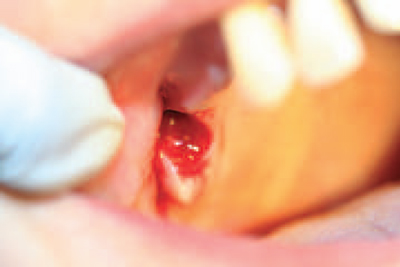SECTION 8
TOOTH EXTRACTION

REASON FOR PROCEDURE
Despite the best efforts of the dentist, there are times when a tooth is beyond restoration and has to be extracted. Often, in these circumstances, the patient could suffer from dental infection and pain if the tooth was allowed to remain. The cause of the infection or pain may be gross caries, severe trauma, periodontal disease or failure of an endodontic technique.
There are also several reasons why a tooth may be extracted electively, and these include the following:
- Prosthetic reasons, when the tooth is malaligned and prevents the placement of a denture or bridge
- Severe malalignment that cannot be corrected orthodontically
- To create space in a crowded dental arch so that other teeth can be aligned orthodontically
- Partially erupted and impacted teeth that cannot be cleaned adequately by the patient and suffer from repeated localised infection
- Retained deciduous teeth that prevent their adult successors from erupting correctly
- Patient choice, where the alternative is complicated and possibly expensive dental treatment
In most cases, a tooth can be simply extracted by loosening it in the bony socket and removing it whole, but, in more difficult cases, a surgical procedure may be required.
SIMPLE EXTRACTIONS
Background information of procedure
A tooth is extracted by loosening it in its socket, and then pushing it out of the socket using a variety of dental extraction forceps, elevators or luxators. To loosen the tooth, there must be access to the top of the root or roots for the dentist to hold onto with the extraction forceps – the tooth is never held by its crown as this would simply fracture during the procedure.
Alternatively, luxators can be used to sever the periodontal ligament attachment to the tooth and also widen the bony socket so that the tooth is loosened. It is then pushed out of the socket as the instrument is pushed apically.
In successful tooth extraction, physical strength is less of an issue than the skill of the loosening technique used by the dentist.
Details of procedure
No matter how loose a tooth, local anaesthetic should always be administered before an extraction procedure. This must be sufficient to numb not just the tooth, but all of the surrounding gingiva, if the procedure is to be painless for the patient.
The dental nurse />
Stay updated, free dental videos. Join our Telegram channel

VIDEdental - Online dental courses


